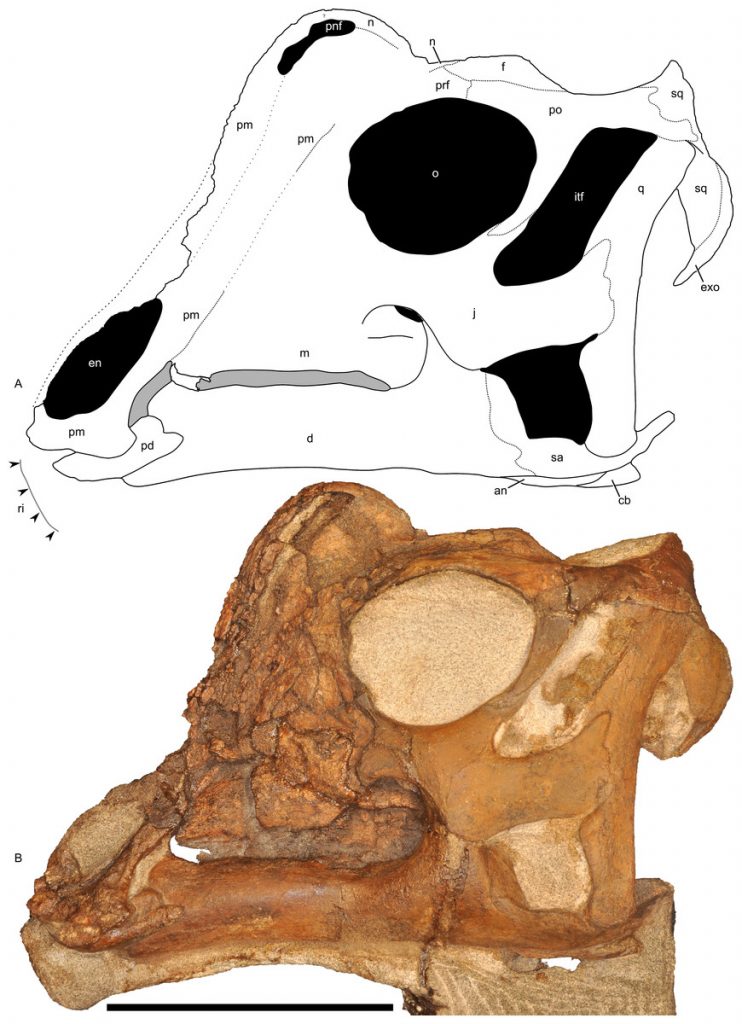Remembering “Joe” the Baby Parasaurolophus
This week, seven years ago, a remarkable paper was published in the academic journal PeerJ. The research centred upon a beautifully-preserved fossil specimen of a baby Parasaurolophus that at around two and a half metres in length, represented the smallest and most complete specimen described to date for this genus. Nicknamed “Joe” this dinosaur that roamed southern Utah some 75 million years ago, demonstrated the astonishing growth rates of duck-billed dinosaurs. Although approximately a quarter of the size of a fully grown Parasaurolophus, bone histology suggested that “Joe” was less than a year old when it died.
Interpretive Drawing and Right Lateral View of the Fossilised Remains -“Joe” the Parasaurolophus

Picture credit: Farke et al (PeerJ)
A Baby Parasaurolophus Found by Students
The fossilised remains of the young Parasaurolophus were found in 2009 by a group of students on a field trip to the Kaiparowits Formation (Campanian faunal stage), exposures at the famous Grand Staircase-Escalante National Monument, with Andrew Farke of the Raymond M. Alf Museum of Palaeontology. When first shown a fragment of fossil bone eroding out of the surrounding sediment, Dr Farke dismissed it as an inconsequential piece of fossil rib. It was only when they explored the area a little more closely did they realise the potential significance of the discovery.
The scientific paper on this remarkable specimen was published in October 2013. The skull, measuring 24.6 cm in length showed signs of the tubular crest beginning to form, although a cross-section of bone from the tibia (lower leg bone), showed no lines of arrested growth (LAGs), implying that the Parasaurolophus may have been less than twelve months old when it died. Based on a comparison with other Lambeosaurine fossils, the research team concluded that Parasaurolophus initiated development of its head crest at less than 25% maximum skull size, contrasting with 50% of maximum skull size in hadrosaurs such as Corythosaurus.
Parasaurolophus formed its unusual headgear by expanding some of its skull bones earlier and for a longer period of time than other closely related duck-billed dinosaurs.
An Interpretative Drawing of the Skull with Fossil Shown in Left Lateral View

Picture credit: Everything Dinosaur
Named after Joe Augustyn
“Joe” was named after Joe Augustyn, a patron of the Raymond M. Alf Museum of Palaeontology, where the fossils can be seen on display.
To read Everything Dinosaur’s original article on “Joe” the baby Parasaurolophus: Fossilised Remains of a Baby Parasaurolophus from Southern Utah.
The scientific paper: “Ontogeny in the tube-crested dinosaur Parasaurolophus (Hadrosauridae) and heterochrony in hadrosaurids” by Andrew A. Farke, Derek J. Chok, Annisa Herrero, Brandon Scolieri and Sarah Werning published in PeerJ.
The award-winning Everything Dinosaur website: The Award-winning Website of Everything Dinosaur.






Leave A Comment